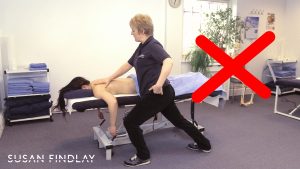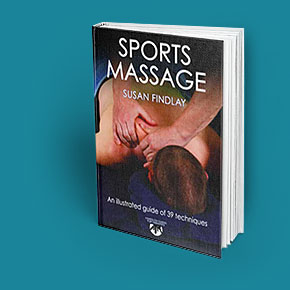The latest blog in this body mechanics series focuses on movement. The goal in massage is for us as therapists to be able to apply the appropriate broad-based compressive force to soft tissue whilst at the same time, using as little physical effort ourselves as possible. More often than not, when you ask clients how the pressure is, they ask for it to be harder, but obviously don’t wanted to be stabbed or poked. Without the proper body mechanics or understanding of movement, at best, this can become extremely tiring for us, at worse it can be injurious.
Historically massage was integrated with movement and exercise, and it wasn’t the standard hour long affair we have today. In order for most massage therapists to achieve financial stability, they need to be able to manage around four, if not more, sessions a day. Without understanding the proper rules of body mechanics, and know the role that movement plays, this would be an unattainable goal.
This article seeks to change the paradigm somewhat around how massage is delivered. It is outdated to think the hand is the primary, or only, tool at our dispense when massaging clients. The key to applying a really dynamic stroke is an awareness of how you use your body as a whole. In order for a massage to be truly successful for both you and your client, you need to be generating the movement from your base throughout the length of your body, making the connection through your hands. Imagine a long piece of string that runs all the way from your feet to your head; when you pull on one end, it causes the other end to move. Use this image to help you see how you should move about when massaging. Think about where your power is coming from? What part of your body is actually doing most of the movement, and what part of your body tires first?
Attempt this as an exercise in order to see how you move when you are working. Assess what is moving and what isn’t. Get into your starting stance and close your eyes – keeping your eyes closed will give you a better indication as to where the movement is originating from. Pick a stroke and perform it. What was it that caused you to move? Was it your arms or was it your feet?
Ideally, it should be your feet that are generating the movement throughout the length of your stroke. Attempt to do it again, this time not allowing the arms to move unless you are aware that the feet are the ones leading the movement. Practise this a few times until it feels like it is coming naturally to you. By being connected to your body and the way it moves, you will find it much easier to control the power, depth and flow of your strokes.
There are a few main principles to effective movement and they include:
Ease versus effort
Self-awareness
Eyes forward
Asymmetric alignment
Symmetrical alignment
Increasing the angle
Unity of movement
Equal exertion

How you Should Move to Increase Depth
To increase the depth of your stroke, you can bring your whole body over, following the movement. Imagine that you want to address the deeper tissues of a rather large athlete who has a strong build. Bringing your upper body over the movement without compressing the tissue into the harder bony structures to produce more force will be very effective. Be careful not to create too severe an angle in your wrist because this will stress the joint and could lead to a repetitive strain injury.

When you intensify a stroke, you need to try to stay in tune with how the tissues are reacting beneath your hands and feel the feedback from your client. Generally speaking, you should move more slowly the deeper you go. There are a few indicators that you can watch out for which tell you that you are moving too fast, these include: the muscle pushing you out by becoming tense and contracting, a verbal indication from your client, or a physical one such as them fidgeting or clenching their fists. There are also physiological signs that will also warn you to slow down such as your client perspiring lightly or their ears becoming red. It is always important to work in conjunction with the tissue. Listen to what the tissue says. It’s also good to recognise that your client may welcome a certain amount of discomfort too, and they will let you know if it’s good or bad discomfort.
You need to ask yourself, how many massages you are able to do in a day. A well-trained massage therapist should be able to effectively deliver around five to six sessions per day, five days a week without any excessive tiredness or pain. If you are finding yourself unable to keep this pace of work up, then incorrect body mechanics is most likely the reason. Read through my blogs, ensure that you correct your body mechanics so that you can reach your full potential as a successful massage therapist. Stay tuned for more helpful suggestions about how to maintain ease while delivering an effective massage.

